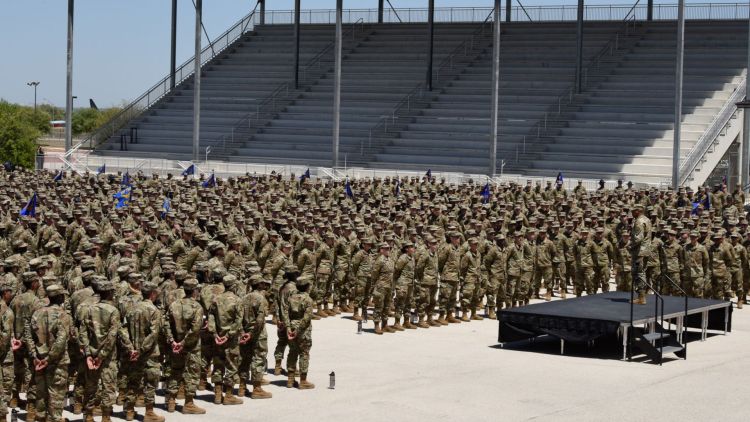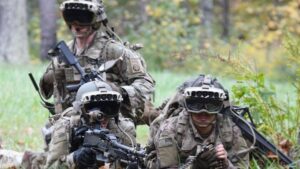After a tough year in 2023, when the US Air Force (USAF) fell 10 percent short of its recruiting goals, the service has made a significant comeback.
Thanks to a mix of new policies, updated standards, and a renewed focus on attracting talent, the service branch hit its 2024 recruiting targets and is now setting its sights on an even bigger goal for 2025.
But this wasn’t a quick fix—it took a lot of adjustments and strategic moves to turn things around.
So, how did the Air Force go from missing its goals in 2023 to setting an ambitious target of 32,500 new recruits for 2025? Let’s break it down.
From a Slump to a Surge
Like the rest of the American service branches, the USAF faced a real challenge in 2023 when it came to recruiting the new generation of forces.
It was the first time since 1999 that the service didn’t meet its recruiting goals, and the gap was about 10 percent.
The reasons for this slump weren’t exactly surprising—lingering effects from the COVID-19 pandemic, higher-than-expected employment rates, and the pull of the private sector all made it harder to convince people to join the military.
But the Air Force didn’t sit back and accept defeat.
USAF recruits march during basic training. (DVIDS)
Brig. Gen. Christopher Amrhein, the Air Force’s top recruiter, and his team started pulling all the levers they could to boost recruiting numbers.
It wasn’t just one change that made the difference; it was a combination of policy shifts, incentives, and process improvements that got the service back on track.
The Changes That Worked
One of the biggest moves was changing the Air Force’s body fat composition standards.
In 2023, the service aligned with Defense Department standards, allowing men to have up to 26 percent body fat and women up to 36 percent. This might not seem like a big deal, but it opened the door for more potential recruits to join.
In fact, this policy alone brought in over 5,000 new recruits, according to a report by Military.com.
Then, there was a shift in the tattoo policy, which allowed small hand and neck tattoos. This change may sound cosmetic, but it made a huge difference, attracting around 660 new recruits.
Another key policy was reinstating the enlisted college loan repayment program, which helped bring in 540 recruits.
These small changes added up to a big boost in numbers.
One of the most successful initiatives in 2024 was the accelerated naturalization program, which helped fast-track US citizenship for recruits. This program brought in about 1,400 new airmen, and it’s not uncommon now to see entire groups at Basic Military Training working toward their citizenship.
The USAF also adjusted its policy to allow legal permanent residents with just two years of residency to enlist, down from the previous 10-year requirement, further expanding the pool of eligible candidates.
(Here’s a nostalgic throwback for all the Air Force folks who went through BMT in the ’90s.)
Tackling Barriers to Entry
The Air Force didn’t stop at just updating standards and incentives, though, as one of the biggest hurdles in the recruitment process is the medical review system.
The electronic health record system, MHS-Genesis, often slows down applications, requiring recruits to provide additional documents for incomplete medical histories.
Last year alone has led to about 8,800 potential recruits walking away from the process because of this.
“That’s talent we just can’t afford to have walk away,” Amrhein pointed out.
To solve this, the service hired 63 contractors to speed up the medical review process, giving recruiters more time to focus on bringing in new talent.
It’s a stopgap solution, but it’s working.
These process improvements have made it easier for recruiters to do their jobs and for recruits to navigate the system without unnecessary delays.
2025: Ambitious but Achievable
With 2024 in the bag, the Air Force is ready to aim even higher for 2025.
The goal? Recruit 32,500 active-duty airmen, 7,600 reservists, 8,679 Air National Guardsmen, and 800 new Guardians for the Space Force.
That’s a 16 percent increase from 2024, and it’s a big ask—but Amrhein is confident it can be done.
“It’s ambitious, but I believe it is executable,” Amrhein told reporters at AFA’s Air, Space & Cyber Conference.
Part of the strategy includes hiring 370 more recruiting staff to help meet these goals. These additional recruiters will be stationed across the US and placed at bases in Europe and the Pacific, where they can help attract military dependents and US citizens living abroad.
Some recruiters will even work in agile recruiter cells, allowing them to support regions with surges in recruitment needs.
Another positive sign is the increase in recruits already waiting in the delayed-entry program (DEP), where recruits are prepped before shipping off to boot camp.
Right now, there are 11,000 people in DEP—up from just over 8,000 last year—giving the Air Force a solid head start on hitting its 2025 targets.
Recruiting in a Competitive Market
Even with all these positive changes, recruiting isn’t without its challenges.
The Air Force is competing with private industry, which offers higher salaries and more immediate perks.
Plus, public awareness of military service is lower than it used to be, making it harder to attract new recruits.
Despite these obstacles, the USAF is taking a proactive approach by partnering with organizations like the Civil Air Patrol and the Air & Space Forces Association to help boost its public profile.
It’s clear that the Air Force can’t afford to slow down its recruiting efforts. As Amrhein puts it, “We cannot take our hand off the throttle.”
(Now, the video below is from a more recent USAF boot camp.)
Final Thoughts
The Air Force has made an impressive recovery after missing its 2023 recruiting goals, but recruiting remains competitive. While the service is doing everything it can to attract the best talent, meeting numbers is just one thing—maintaining the long-term readiness and professionalism of the force is another. Hopefully, quality won’t be sacrificed as the USAF continues to bring in even more recruits next year.
In the end, the numbers might be there, but the real test will come in the years ahead as these recruits step into their roles and prove whether they’re ready to meet the high standards of the US Air Force.
—
Disclaimer: SOFREP utilizes AI for image generation and article research. Occasionally, it’s like handing a chimpanzee the keys to your liquor cabinet. It’s not always perfect and if a mistake is made, we own up to it full stop. In a world where information comes at us in tidal waves, it is an important tool that helps us sift through the brass for live rounds.



